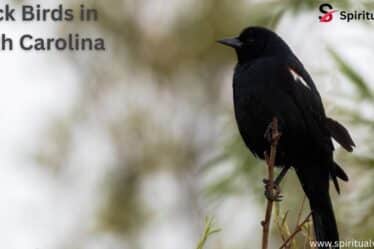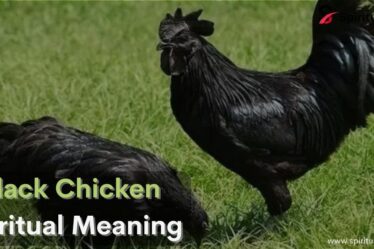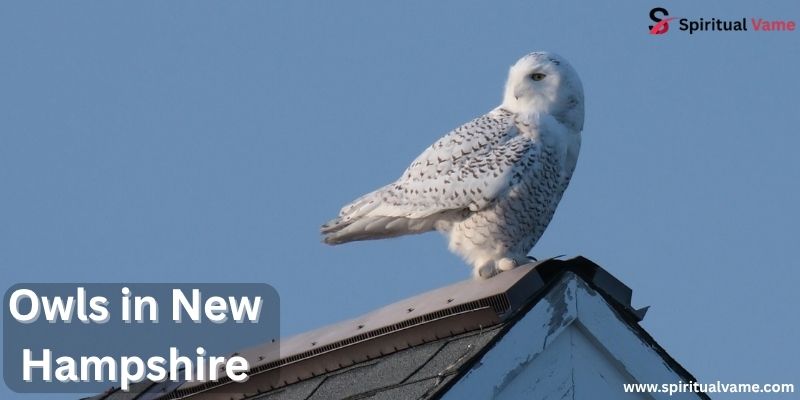
Owls in New Hampshire are fascinating birds that many people love to see. These secretive creatures are known for their silent flight, big eyes, and haunting calls. You can find many different types of owls in New Hampshire if you know where to look. Some are common all year, while others visit only in winter. From deep forests to quiet fields, owls are hiding in many places across the state.
This guide will help you discover all 12 species of owls in New Hampshire. You’ll learn where they live, what they eat, and when you can spot them. Get ready to explore the wild and meet the amazing owls in New Hampshire.
1. Great Horned Owl

The Great Horned Owl (Bubo virginianus) is the most widespread and commonly recognized owl across North America, and it thrives in New Hampshire’s mixed woodlands. With its large body, prominent ear tufts, and deep yellow eyes, it looks exactly like a bird straight out of a fairy tale. These owls are fierce predators, hunting everything from squirrels and rabbits to skunks, snakes, and even other birds.
This species is a year-round resident, and its low-pitched hooting can be heard echoing through forests and fields all year long. They’re highly territorial and monogamous, often reusing the same nesting sites for many years. You’ll find them in large trees, cliff ledges, or even artificial structures. Their silent flight, sharp talons, and powerful beak make them one of the top hunters in the region.
2. Snowy Owl
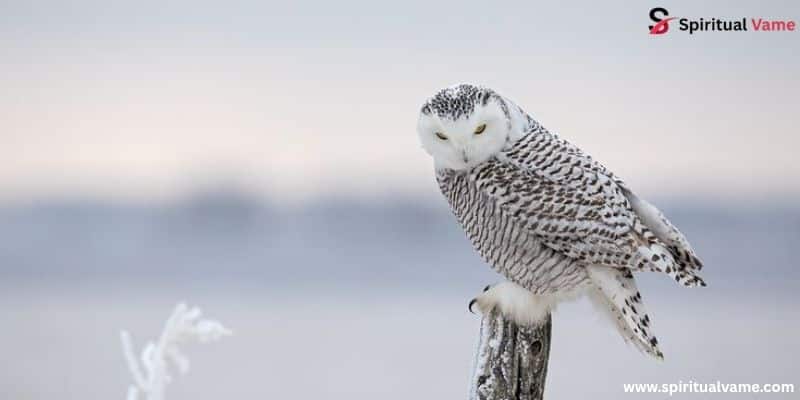
The Snowy Owl (Bubo scandiacus) is a magical winter visitor from the Arctic tundra, often seen during irruptive years when food becomes scarce up north. These striking white owls with golden eyes and black markings show up along coastal New Hampshire, particularly around places like the Isles of Shoals and Hampton Beach.
Unlike most owls, Snowy Owls are often diurnal, meaning they hunt during the day. Their diet includes lemmings, voles, and other small mammals and birds. Because they nest on the ground in the Arctic, they don’t mind wide-open spaces like airports, fields, and marshes when visiting here. Keep an eye out in winter—you might spot one perched low in a field or on a fence post, scanning for prey with incredible focus.
3. Northern Saw-whet Owl

Small but mighty, the Northern Saw-whet Owl (Aegolius acadicus) is one of the tiniest owl species in New Hampshire, yet it’s a fierce and efficient hunter. These adorable owls have oversized heads, no ear tufts, and bright yellow eyes. They get their name from their call, which sounds a bit like a saw being sharpened.
They prefer dense coniferous forests, where they can stay well hidden thanks to their mottled brown plumage and excellent camouflage. Though mostly nocturnal, you might spot one roosting quietly in a spruce during the day. Their diet includes small rodents, insects, and amphibians, and they often nest in tree cavities or nest boxes if natural spaces are limited.
4. Barred Owl
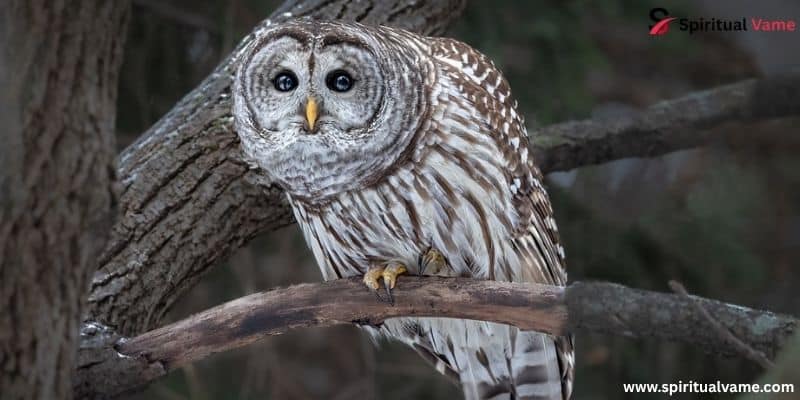
The Barred Owl (Strix varia) is one of the most vocal owls in New England, best known for its haunting call that sounds like “Who cooks for you? Who cooks for you-all?” These medium-to-large owls have dark brown eyes, rounded heads, and a striking pattern of horizontal and vertical bars across their chest and belly.
Barred Owls live in mature forests with plenty of tall trees and wetlands, where they hunt for frogs, fish, and small mammals. They’re resident birds in New Hampshire, and often stay close to their birthplace. Known for their monogamous nature, these owls often form strong pair bonds and may raise their young in old hawk or squirrel nests.
5. Great Gray Owl
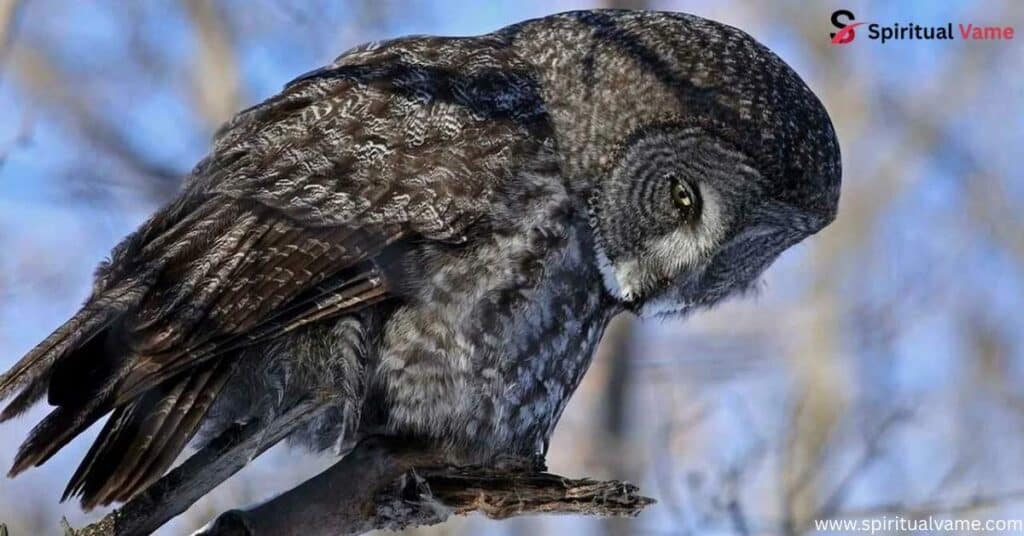
Rare and elusive, the Great Gray Owl (Strix nebulosa) is one of the largest owls in the world by length, though it’s surprisingly lightweight for its size. It visits northern New Hampshire mostly during harsh winters or special irruptive years. This owl prefers dense boreal forests and bogs, where it silently glides just above the snow to catch hidden rodents.
With a wide facial disk that helps them pinpoint prey under snow, and piercing yellow eyes, the Great Gray Owl is perfectly adapted for cold climates. Despite their size and beauty, they’re very shy and difficult to spot, making sightings in New Hampshire a rare and exciting event for birders and wildlife photographers.
6. Eastern Screech-Owl
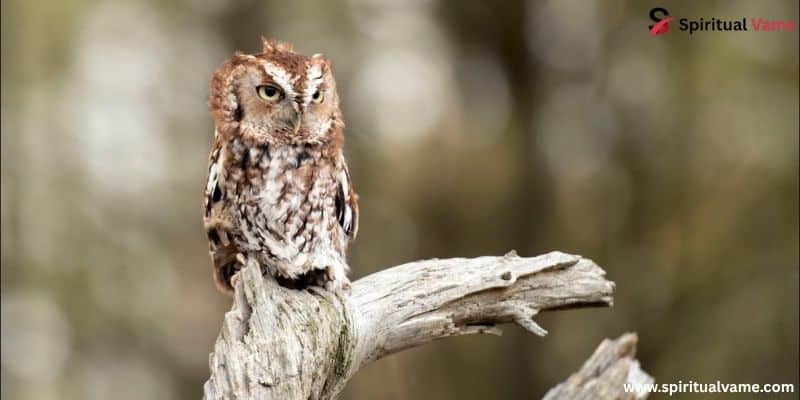
The Eastern Screech-Owl (Megascops asio) may be small, but it’s full of character. With its bark-like plumage, short ear tufts, and trilling whinny calls, it’s often heard before it’s seen. These owls come in two main colors—gray and red—and both blend seamlessly with tree bark.
These owls are found in suburban areas, woodlots, and parks throughout New Hampshire, nesting in cavities, abandoned woodpecker holes, or nest boxes. They’re nocturnal hunters, going after insects, mice, and even small birds. Despite their name, they don’t screech often. Instead, they whistle and trill in soft, eerie tones.
7. Boreal Owl
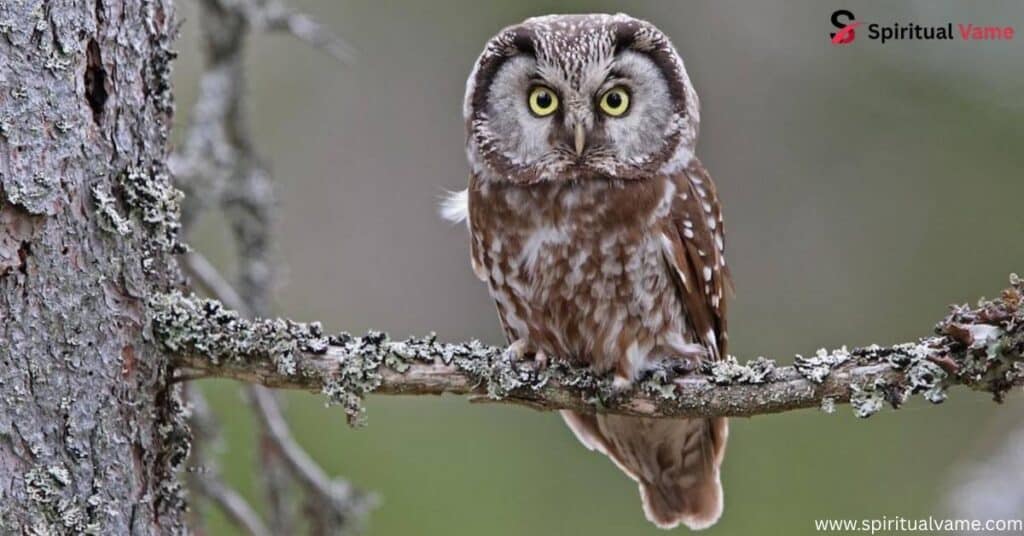
The Boreal Owl (Aegolius funereus) is a cold-weather specialist that usually stays hidden in New Hampshire’s northern forests and high elevation spruce-fir zones. With its soft, heart-shaped facial disk and small stature, it resembles the Northern Saw-whet Owl but is even rarer to encounter.
It hunts mostly at night, feeding on voles, mice, and shrews, and sometimes birds. Nesting in old woodpecker holes, it is shy and secretive, which makes its presence easy to miss. Researchers sometimes locate them through their rhythmic, mechanical hoots during the spring breeding season.
8. Short-eared Owl
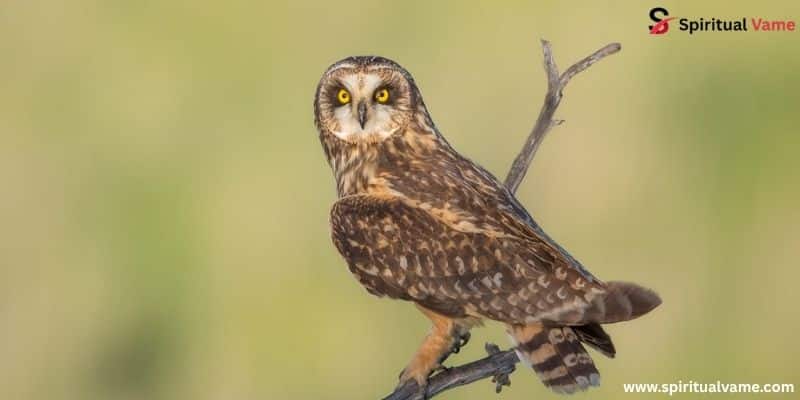
You’ll find the Short-eared Owl (Asio flammeus) in open fields, meadows, and coastal marshes of New Hampshire, particularly during the colder months. These medium-sized owls have small, barely visible ear tufts, bold streaks, and yellow eyes rimmed in black.
They often fly low over open ground, almost like a moth, using their excellent hearing and vision to find small mammals like mice, voles, and shrews. These owls are migratory, and their populations shift based on food availability. You’re more likely to see them near sunset, making them one of the few owls that are active during twilight.
9. Northern Hawk Owl
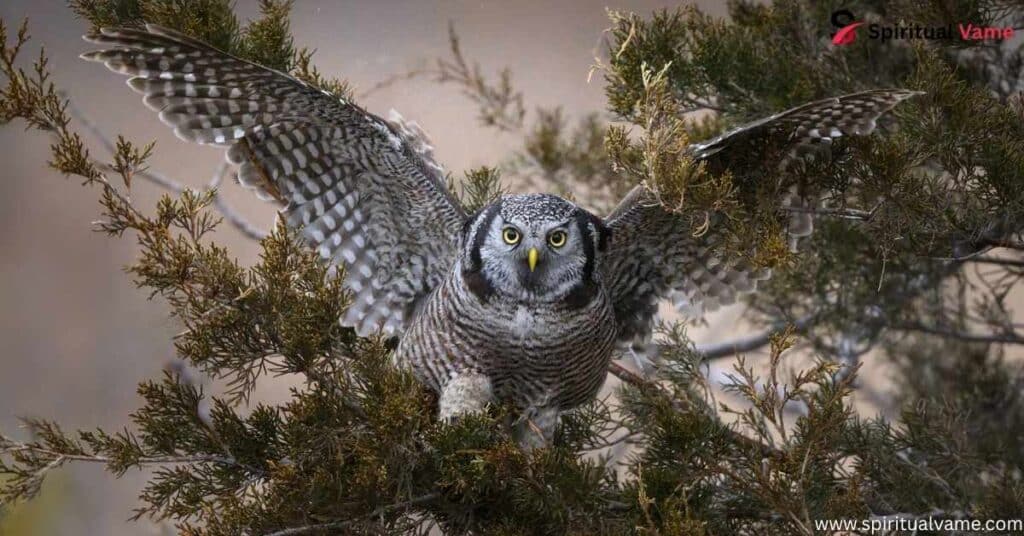
With its long tail and falcon-like flight, the Northern Hawk Owl (Surnia ulula) looks and acts more like a hawk than an owl. It occasionally shows up in northern New Hampshire, especially during food shortages in Canada.
This owl is mostly diurnal, preferring to hunt during the day using keen eyesight and rapid movements. It perches high on trees or poles, scanning for prey across snowy landscapes. While rare, their appearance draws crowds of curious birders and photographers when they come down into New England.
10. Barn Owl
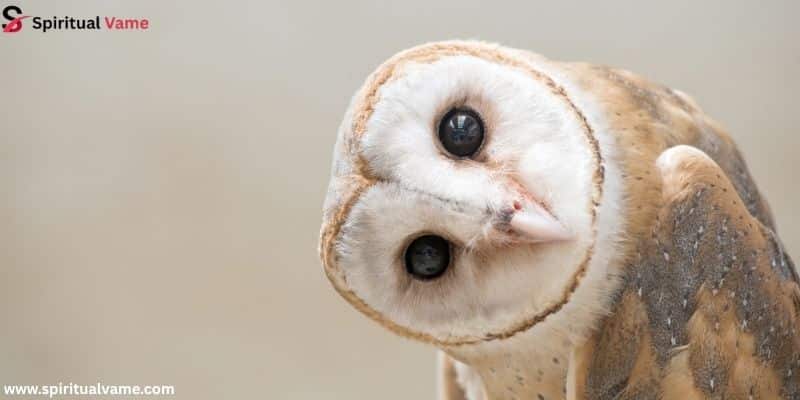
Rare in New Hampshire, the Barn Owl (Tyto alba) is more often seen in warmer climates. But a few have been documented in the southern part of the state, usually in farmland or open grasslands. With their pale, heart-shaped face and ghostly white feathers, Barn Owls are instantly recognizable.
These owls rely on silent flight, stealth, and remarkable hearing to catch mice, rats, and voles in total darkness. Though their population is small here, conservation groups like NH Audubon and NH Fish and Game are working to support suitable habitats through monitoring and research programs.
11. Long-eared Owl
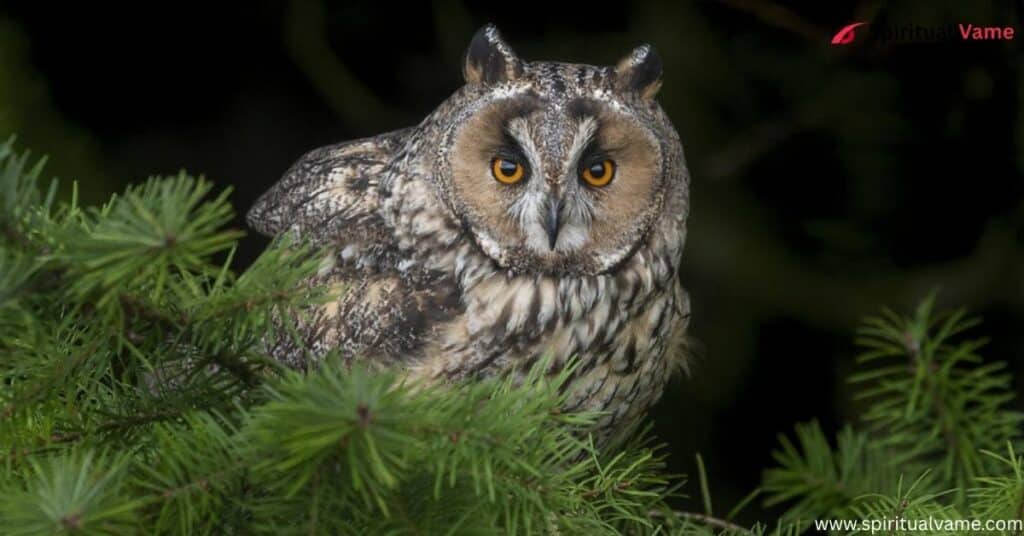
The Long-eared Owl (Asio otus) is a secretive, medium-sized owl with long, upright ear tufts and orange facial disks. They favor dense conifer groves near open hunting grounds such as meadows or fields. In New Hampshire, they’re spotted during migration or winter.
They roost communally in winter, sometimes in groups, though you’ll rarely notice them unless you know where to look. Their low, hooting vocalization and sleek plumage help them stay hidden. If you come across one, it’s a thrilling and rare sighting worth savoring.
12. Burrowing Owl
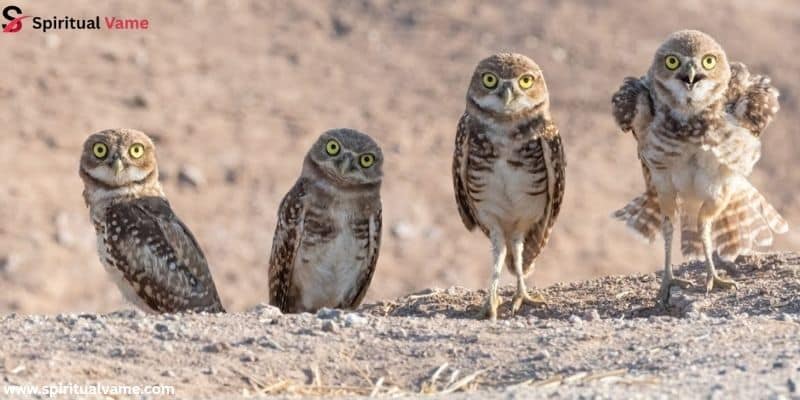
The Burrowing Owl (Athene cunicularia) is a true rarity in New Hampshire. Native to the open grasslands of the western U.S., they’re almost never seen in the Northeast. However, an occasional individual may wander far from home, exciting local birders when spotted.
These small owls don’t live in trees but instead use abandoned ground burrows made by prairie dogs or gophers. With long legs, bright yellow eyes, and comical expressions, they stand out from all other owl species. Their presence in New Hampshire is always a headline in local birding forums.
Where to Find Owls in New Hampshire
If you’re hoping to see an owl in New Hampshire, the best approach is to explore quiet areas at dawn or dusk. Look near wetlands, forests, and even coastal zones like the Isles of Shoals. In places like Squam Lakes Natural Science Center and the Hollis area, you may spot owls in the wild or learn more through educational programs. Local groups like NH Audubon also offer birding walks, nest box programs, and citizen science efforts to help protect these incredible creatures.
Bringing a field guide, using binoculars, and listening carefully for calls—whether it’s a “hoot,” “whistle,” or “screech”—can dramatically increase your chances. Keep your distance, respect their space, and remember: a quiet observer often sees the most.
Conclusion
Owls are some of the most fascinating and mysterious animals you can encounter in New Hampshire. From the mighty Great Horned Owl to the elusive Boreal Owl, these birds are vital parts of the local ecosystem. They help control rodent populations and offer a deep connection to the natural world. Whether you’re birding in the North Country, scanning the skies over coastal marshes, or hiking the White Mountains, there’s always a chance to see or hear one of these incredible creatures. By supporting conservation efforts and staying informed, we help keep the owls of New Hampshire thriving for future generations to enjoy.


